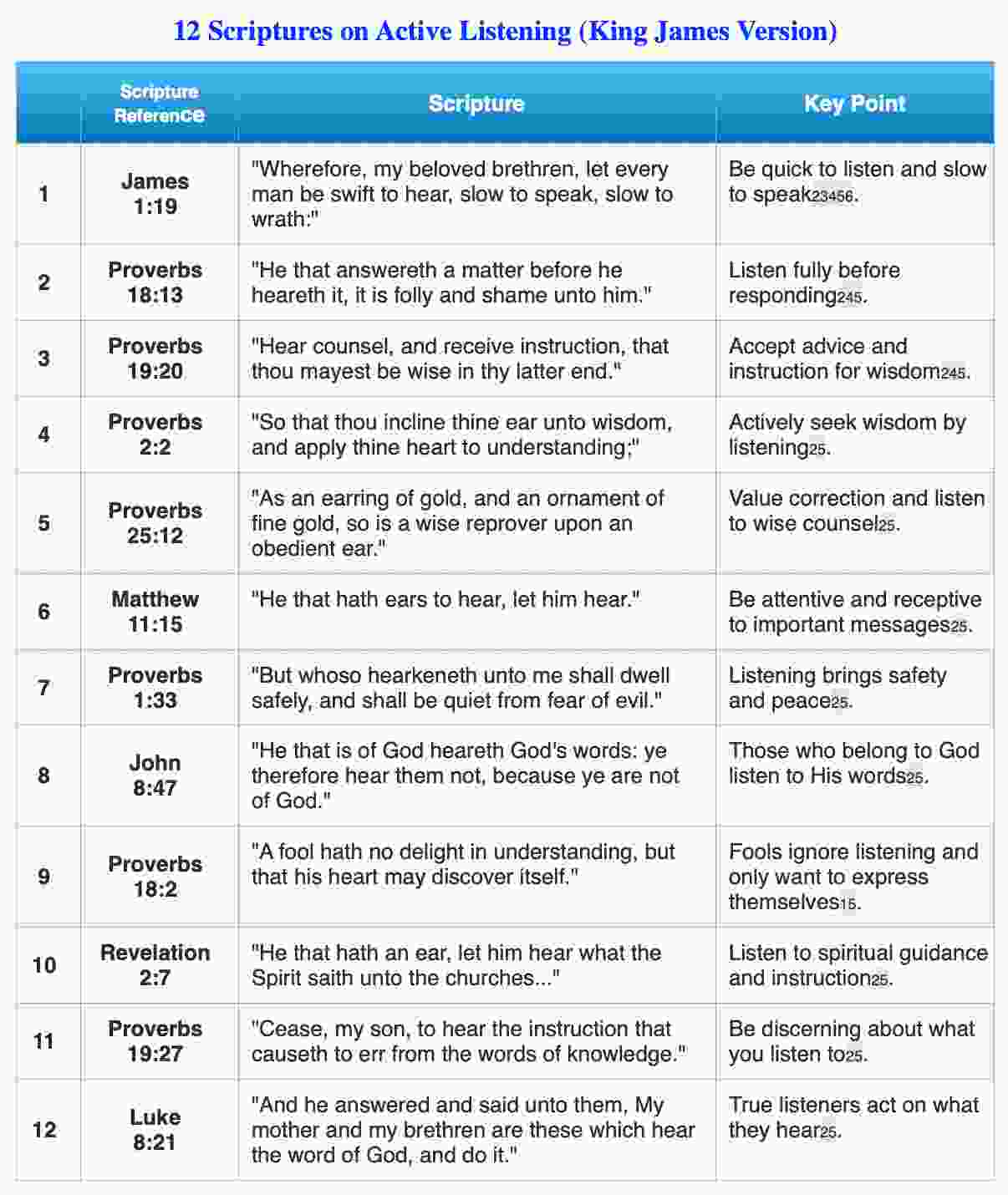Active Listening:
How to do it
(Part 1)
How to Do Active Listening:
12 Key Points (and/or Steps) for AL
1. Be Fully Present
2. Use Positive Body Language
3. Listen Without Interrupting
4. Show That You Are Listening
5. Reflect and Paraphrase
6. Ask Clarifying Questions
7. Withhold Judgment
8. Recognize and Validate Emotions
9. Avoid Distractions
10. Provide Constructive Feedback
11. Summarize Key Points
12. Practice Empathy and Patience
These steps will help you become a more effective active listener, improving your communication and relationships in both personal and professional settings1257.
- https://wayne.edu/learning-communities/pdf/becoming-active-listener-13.pdf
- https://hr.mit.edu/learning-topics/comm/articles/active-listening
- https://www.verywellmind.com/what-is-active-listening-3024343
- https://www.bhf.org.uk/informationsupport/heart-matters-magazine/wellbeing/how-to-talk-about-health-problems/active-listening
- https://www.ccl.org/articles/leading-effectively-articles/coaching-others-use-active-listening-skills/
- https://www.slideshare.net/slideshow/presentation-active-listening/4666930
- https://asana.com/resources/active-listening
- https://www.slideserve.com/gcobb/7-habits-powerpoint-ppt-presentation
Recognize various viewpoints before talking
(Understand the value of active listening)
0:52 seconds
Hearing is not the same as listening.
This is a very important distinction because listening is a critical part of success, of getting to know another person’s point of view, or personal perspective. Without getting to know that: you will never get to know the other person. You may think you know them, but you never really will, not until you learn how to listen.
There are 5 easy ways to practice active listening that form the acronym “B U I L D.”
- B: Body language
- U: Understanding
- I: Interrupting (Don’t do it)
- L: Look them in the eye
- D: Don’t judge
This all may seem really easy to do, but few people really know how and actually do–do it.
Body language is how you stand and how you present yourself. Good posture means you are focusing your attention on the person you’re engaging with.
Understanding means that you truly understand what is being said. Don’t just stand there and nod your head and then leave the conversation and realize you have no idea what you just talked about.
Interrupting other people stops the flow of the conversation and makes it seem like what you have to say is more important than what the other person is saying.
Look someone in the eye when you are talking to them. We are used to looking at screens these days, but we have to practice looking people in the eye.
Don’t judge people. Instead, put yourself in their shoes. This is empathy, which is one of the most important skills any leader should have.
Your message has been sent

